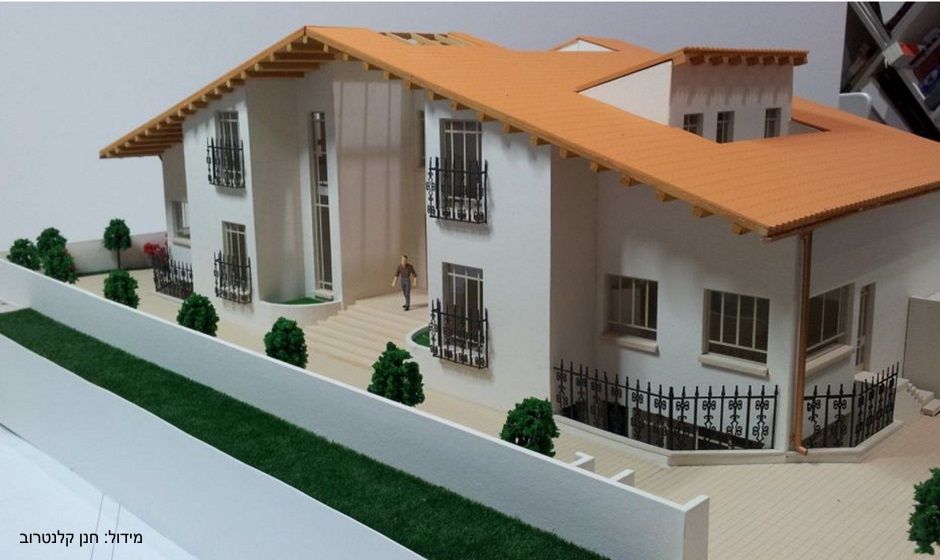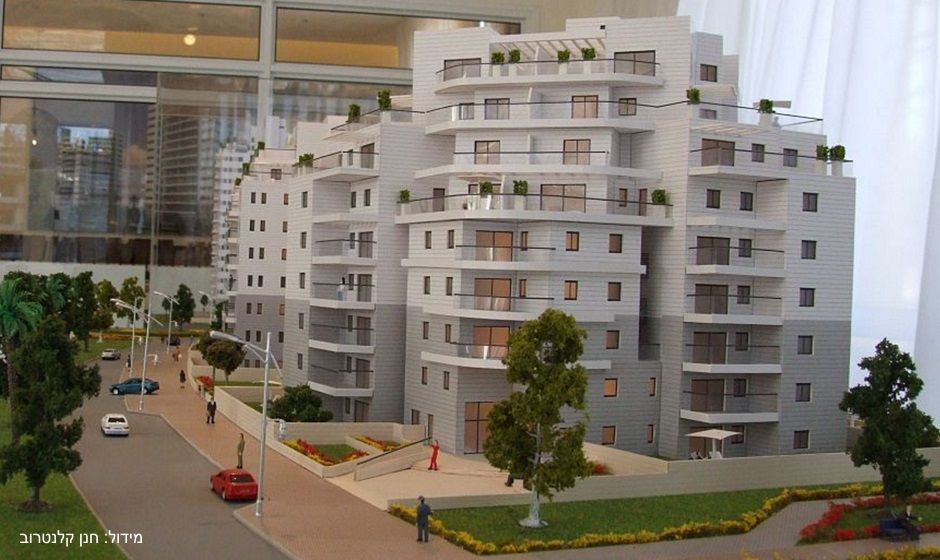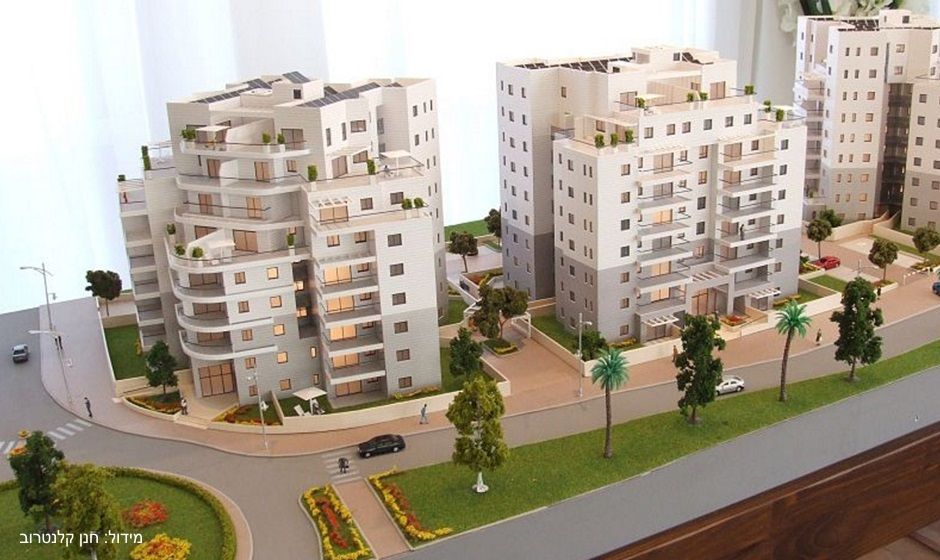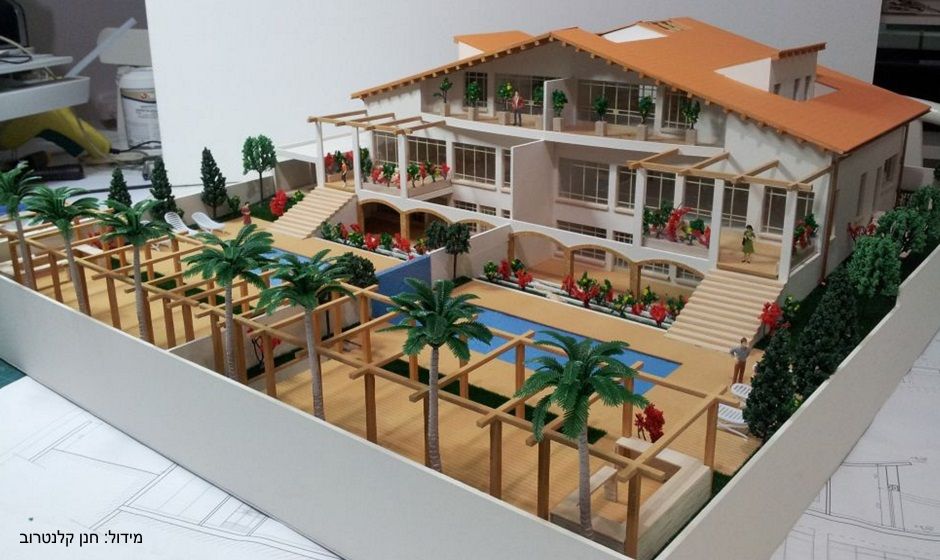Laser cutting of Architectural modeling
Topographic model
A topographic model is a modle built of layers of material that are attached to each other and create a three-dimensional object. These layers are actually simulate the topographic lines that we know from topographical maps.
In this type of work, proper planning of the files and selection of the appropriate raw materials will result in savings of time and money. It is possible to say that thinner materials are usually cheaper and cut faster, each layer made of a material sheet and the affixing of many layers on top of each other creates the three-dimensional structure of the model, which represents the surface and the terrain.

Laser cut Architectural Model of a Private House - (Modeling: Hanan Kalantarov)
Architectural modeling
In order to facilitate the process of building architectural models and save precious time, it is recommended to mark the various parts of the model in numbers and letters. In order to avoid distinguishing markings, it is best to place them in areas that are less visible after the model is assambled, for example on areas that will be covered with other parts or on the back of the parts.
In order to save the raw materials, it is advisable to plan the layouts to maximize the use of the raw material in the stock size (usually 90/60 cm or 100/70 cm) In order to make it easier for us to build a quotation in a short time, Will contain the appropriate drawings rule for the same raw material., for example: a file will contain 5 different rectangles, each representing a sheet (material size) to be cut in 2mm thick gray cardboard. Of course, you should also consider guidelines for making files that we publish.

Laser cutting of Architectural Model of Residential Building - (Modeling: Hanan Kalantarov)
Connections of parts to the board (creating 'micro-joints')
In multiplying parts, it is recommended to try to bind the parts to the original board by breaking the continuous cutting line, surrounding the parts. In any case, we recommend consulting with us before preparing the files regarding the specific raw material you intend to cut. The 'micro-joints' produced will leave the parts connected and board, thus preventing loss of parts or inability to assign a specific part to the final model, and in this case it is recommended to place the 'micro-joints' in hidden areas in order to maintain a high quality finish and clean appearance.
When constructing the model, it is possible to break the pieces by breaking the joints manually or by using a craft knife when it comes to materials such as cardboard and paper.
Holding parts to the board with adhesive tape
In some cases, when possible, the parts can be left in their position on board using adhesive tape, so that the parts remain in place as in the original drawing, and when the model is built, we can identify them more easily. We operate according to our experience and discretion and use this method many times. In any case where it is important for you to use this method or not to use this method, please make sure to note this before us.
Peeling the material protective foil
Some of the materials (acrylic, and other plastics) come with a protective layer of plastic on both sides of the material. This layer protects the raw material from scratches, bumps and bruises that can be caused by the adhesion and assembly of the parts by the user.
If you want to remove one of the protection layers or both, please indicate this to our stuff before making the cut.
When you cut a acrylic, sometimes the parts have a transparent protective layer and you may get the impression that the material is scratched and dirty. On this occasion we would like to mention that the coating must be peeled in order to obtain the high transparency of the material.

Laser cutting of Architectural model - residential neighborhood (Modeling: Hanan Kalantarov)
Coating the raw material to keep it clean
In some cases the raw materials get stained as a result of gases emitted during the cutting process. Sometimes, it is possible to protect the material with an additional coating that is paste before cutting on the raw material. The coating can be removed at the end of the process and expose a much cleaner raw material than we would otherwise have received.
If you want to minimize the signs of bloating, check with us the possibility to watch the raw material before starting the work.
Small pieces
In small-scale work, very small parts are often obtained. These parts can not be collected because of their size and some of them even fall from the machine working bed sucked out through the exhaust system.
Since there is no possibility of "saving" these parts, it is worthwhile to think ahead of time how to save them. One way is to simplify the graphics and consolidate a few small parts into a larger part (in this case you can mark the small details and cut them manually later). Another way is to concentrate the small parts in a separate file and your conversation in a separate board on a non-network surface. It should be taken into account that cutting on a non-retractable surface (for example, an aluminum surface) gives the result of dirty and smeared parts in relation to cutting on a aluminum mesh.
Extra parts
Following the previous reason, when working with small parts, it is always advisable to produce extra parts for each case of missing parts.

laser cutting of Architectural Model - Private House (Modeling: Hanan Kalantarov)
What can you do to get a quick quote?
The steps you should take to get a quick and correct quote are:
- Reading the guidelines for preparing files and the advanced guidelines as well we publish on the site.
- Build a correct cut file:
- Preparing a PDF or DXF object file (a normal file size will not usually exceed 2MB) per raw material (one file is sufficient for multiple sheets of cardboard or other material).
- Position all artwork to cut in rectangles 90/60 cm or 100/70 cm depending on the size of the available raw material.
- Verify that the cut / mark lines are correct, separated into colors and that there is no duplication (line on line).
- Avoiding any other irrelevant information (layers, transparent / turned objects, dimensions, and any other text).
- Details about the type of materials (size and thickness) and quantity desired from each file. If possible, the file name should contain the name of the raw material and thickness required.
- Send Email to [email protected] and please specify:
- The name of the person that order the job (the name to which the invoice will be directed, if we do the work)
- Phone numbers where the applicant can be reached.
- An email address that we can contact you.
- Details of materials required to carry out work from our inventory The actual availability of raw materials must be ensured when ordering the work.
At lasercu4 we provide laser cutting services for model constractors - we do not perform assembly of the models or their construction.
